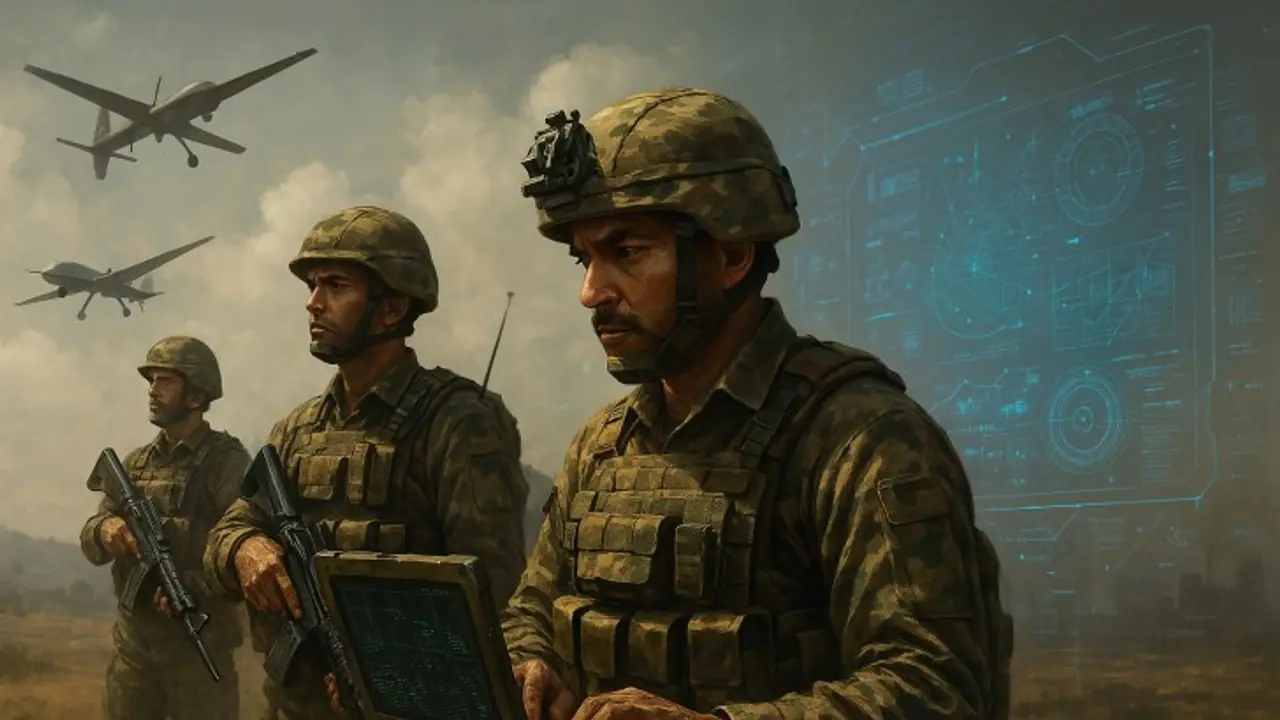The Indian Army has launched a transformative Rs 2.1 lakh crore modernization initiative titled the "Decade of Transformation" (2023–2032), aimed at revamping its technological infrastructure across three phases.
New Delhi: The Indian Army is spearheading an ambitious Rs 210,000 crore technological transformation designed to comprehensively modernise its capabilities over the decade spanning 2023–2032.

Three-phase Modernisation Plan
The "Decade of Transformation" initiative is structured into three distinct phases, strategically developed to integrate and refine advanced technologies, ensuring the Army’s operational supremacy amid evolving security challenges.
The initial phase from 2025 to 2027 will focus on reviewing and restructuring existing technological infrastructure.
This phase emphasises innovation-driven solutions, unit reorganisation for optimal technology assimilation, and streamlined internal processes to swiftly respond to emerging threats.
From 2028 to 2030, the second phase will concentrate on capability enhancement, systematically integrating sophisticated technologies into operational frameworks.
This phase will also include advanced applications such as artificial intelligence, robotics, drone technologies, and electronic warfare systems, significantly boosting the Army’s readiness and operational effectiveness.
The final phase, scheduled from 2031 to 2032, will involve a comprehensive evaluation and reassessment of technological implementations. It will focus on refining these strategies to ensure their adaptability, sustainability, and effectiveness for future operational scenarios.

Five Pillars of Technology Absorption Strategy
The Army's technology absorption strategy comprises five pillars: aligning and synergising technologies; mapping futuristic and emerging technologies; strengthening the domestic defence technology ecosystem; streamlining acquisition and procurement processes; and cultivating technologically proficient leaders, known as 'Techno Warriors and Techno Commanders.'
Army Design Bureau: Driving Innovation
The Army Design Bureau (ADB) is pivotal in this transformative agenda, proactively engaging with over 1,700 industries, collaborating with 200 premier academic institutions, and partnering with 50 leading research organisations.
The Compendium of Problem Definition Statements (CPDS), launched in February 2023, detailed 110 specific technological challenges, resulting in significant industry interest with 512 proposed solutions, initiation of 48 projects, and ongoing No Cost-No Commitment (NCNC) demonstrations of 17 projects.
The upcoming release of CPDS 2025 and the Compendium of Tech Challenges (CTC) aims to further stimulate indigenous innovation.
Procurement Under Make-I & Make-II
Of the total investment, Rs 113,000 crore is dedicated to Make-I and Make-II procurement categories. Make-II, notable for its industry-funded prototype development and guaranteed procurement upon successful trials, has shown tangible outcomes.
Notably, 19 out of 45 Make-II projects were initiated suo moto, and two contracts worth Rs 178 crore have been signed. For example, the Manoeuvrable Expendable Aerial Target (MEAT), developed under a Rs 96 crore contract awarded to Anadrone Systems Private Limited in January 2022, is now operationally deployed for air defence training.
Another major success is the Integrated Air Defence Combat Simulator, reflecting effective industry collaboration.

iDEX: Boosting Startups & Innovation
The Innovations for Defence Excellence (iDEX) initiative is another critical component, with 86 projects currently underway.
Acceptance of Necessity (AoN) has been granted for 14 projects valued at Rs 235 crore. Of these, nine projects have reached the contract stage, with four already operationally deployed.
Spiral Development & NCNC Demos
The Army also actively supports "Spiral Development," enabling iterative product enhancement through continuous feedback and testing.
Over the past year, the Army facilitated internal evaluations of products from private industry, Defence Public Sector Undertakings (DPSUs), and startups, including drones, perimeter intrusion systems, and weapon-locating radars.
Additionally, 85 NCNC (No Cost No Commitment) demonstrations have been successfully conducted, leading directly to the procurement of 24 types of equipment worth approximately Rs 3300 crore.
Inno-Yoddha Competition: Military to Market Transfer
Through the annual Inno-Yoddha Ideas & Innovation Competition, the Army facilitates technology transfer from military innovators to industry partners.
This initiative has successfully led to the bulk rollout of the Vidyut Rakshak system, alongside the transfer of technology for Exploder and Agni Ashtra.
To expand its regional outreach and industry collaboration, Regional Technology Nodes (RTNs) have been established in Pune and Bengaluru, enhancing local industry and academia engagement.
Commitment to Atmanirbharta
Furthermore, specialised Indian Army cells at IIT Delhi, IIT Kanpur, and IISc Bengaluru have incubated over 30 startups, significantly contributing to advancements in artificial intelligence, robotics, and electric vehicles.
It should be noted that despite procedural complexities and technological hurdles, the Indian Army remains committed to self-reliance and technological excellence.


